Curcumins
The E number for curcumin is: 100
INS No for curcumin and turmeric are100(i-ii)
Alternative Names for curcumin:
Curcumin
Turmeric
Turmeric Oleoresin
Turmeric Yellow
Natural Yellow 3
Color Index No 75300
Heat and Light stability of curcumin: Turmeric has good heat stability but low light stability high moisture content product.
pH stability of curcumin: At higher pH the colour hue shift to red and pigment become unstable optimal pH range of Turmeric(curcumin) is between 3-7
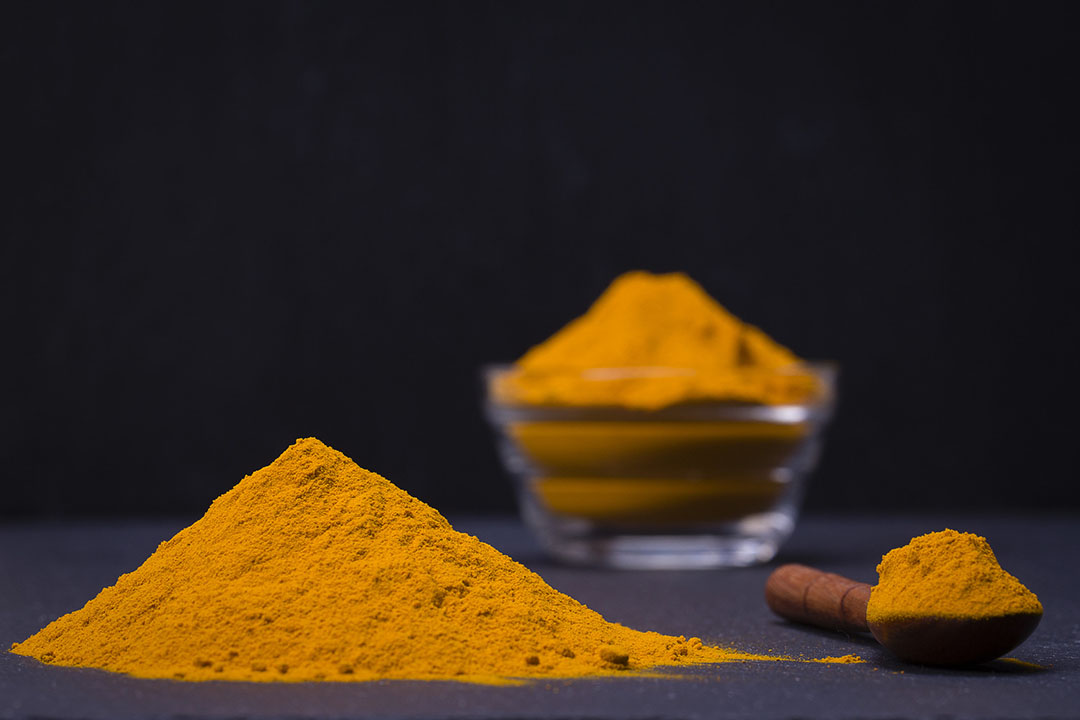
Physical Description of curcumin
The food color curcumin (turmeric yellow) is obtained by solvent extraction of turmeric, i.e. the ground rhizomes of Curcuma longa L., with purification of the resultant extract by crystallization. innaeus plant, a member of the ginger family. The commercial product consists essentially of curcumins: the coloring principle (1,7-bis(4-hydroxy3-methoxyphenyl) hepta-1,6-diene-3,5-dione) and its desmethoxy and bisdesmethoxy derivatives in varying proportions.
Common Uses
Turmeric, turmeric oleoresin, and curcumin are yellow color additives that are used in condiments such as pickles, mustard, seasonings, relish, hot peppers, snacks, baked goods, sauces, salad dressing, oils, margarine, frozen desserts, cheeses, pies, cakes, candies, beverages, frosting, cereal, snacks, fruit preparation, convenient food, meat, seafood and soups.
August Food Ingredients is one of the leading manufacturer and supplier of Turmeric and curcumin natural food colour
Regulatory Approvals for curcumin as natural colour
USA(USFDA regulation): Turmeric (21 CFR 73.600) and Turmeric oleoresin (21 CFR 73.615) are exempt from certification and may be safely used for the coloring of foods generally, in amounts consistent with GMP
JECFA regulation: ADI of 0-3 mg/kg bw established for curcumin (2003).No ADI allocated for turmeric as it is regarded often as a food rather than as a food additive (1986). No ADI allocated for turmeric oleoresin (1989).
EC regulation: ADI for curcumin of 3 mg/kg bw/day (EFSA, 2010). EFSA has also established MPLs for use of Curcumin in beverages and foodstuffs according to the European Parliament and Council Directive 94/36/EC.
Reference :IACM website: https://iacmcolor.org/color-library/
Lutein

E number of lutein is E 161b alternate name of INS No. 161b (i-iii)
EINECS No. 204-840-0
CAS No. 127-40-2
Alternative names:
Lutein from Tagetes erecta ,Tagetes extract ,Lutein esters from Tagetes erecta,Mixed carotenoids ,Xanthophylls, Aztec marigold
Heat and Light stability of lutein: Lutein has good heat and light stability
pH stability of lutein: Lutine and marigold extract is stable in a pH range of 2.5-6.5
Physical Description
Lutein is a naturally occurring pigment extracted from marigold flowers (tagetes erecta), grown abundantly throughout South America and Asia. The pigment is a carotenoid and belongs to the group called xanthophylls. Lutein is also used in functional foods due to its antioxidant properties. This color has good stability against light, heat and pH, and provides a warm yellow color. Lutein esters from tagetes erecta is a dark yellow-brown solid insoluble in water and soluble in hexane and is obtained by solvent extraction of dried petals of marigold, further purification and subsequent removal of solvents.
Common Uses
Lutein esters from Tagetes erecta and lutein from Tagetes erecta are used as food coloring agents and nutrient supplements in a wide range of baked goods and baking mixes, beverages and beverage bases, breakfast cereals, chewing gum, dairy product analogues, egg products, fats and oils, frozen dairy desserts and mixes, gravies and sauces, soft and hard candy, infant and toddler foods, milk products, processed fruits and fruit juices, soups and soup mixes at levels ranging from 2 to 330 mg/kg.
August Food Ingredients is one of the leading manufacturer and supplier of lutein natural food colour
Specifications
Codex GSFA Provisions
The Codex Alimentarius Commission has finalized authorization of Lutein from Tagetes erecta (INS 161b(i)) use in flavored fluid milk drinks (food category number 1.1.4) with a maximum permitted level (MPL) of 100 mg/kg, as noted in the General Standard of Food Additives (GSFA) Many other applications of lutein from tagetes erecta as a color additive in foods and beverages have been proposed and are pending authorization, following completion of the review and comments process.
Lutein esters from Tagetes erecta (161b(iii)) is a food additive that is included in Table 3 of the GSFA, and as such may be used in specified foods under the conditions of good manufacturing practices (GMP) as outlined in the Preamble of the GSFA, as well as food conforming to Commodity Standards for Chocolate and Chocolate Products (CS 87-1981) and Bouillons and Consommés (CS 117-1981).
Regulatory Approvals
JECFA regulation about lutein: Based on the absence of toxicity in a wide range of studies, the Committee at its 86th meeting established a group ADI “not specified” for lutein from Tagetes erecta, lutein esters from Tagetes erecta and zeaxanthin (synthetic). (86th meeting, 2018) No ADI allocated for tagetes extract (31st report, 1987)
USA(USFDA) regulation about lutein: Tagetes (Aztec marigold) meal and extract is exempt from certification and may be safely used in chicken feed to enhance the yellow color of chicken skin and eggs at a quantity that in the finished feed is supplemented sufficiently with xanthophyll and associated carotenoids and meets the tolerance limitation for ethoxyquin in animal feed (21 CFR 73.295)
EU regulation about lutein: ADI of 1 mg/kg bw/day for lutein derived from Tagetes erecta containing at least 80% carotenoids consisting of lutein and zeaxanthin (79 and 5% respectively). (EFSA, 2010) EFSA has authorized use in specific foods and beverages at maximum allowed use levels.
Reference :IACM website: https://iacmcolor.org/color-library/

Carotenes
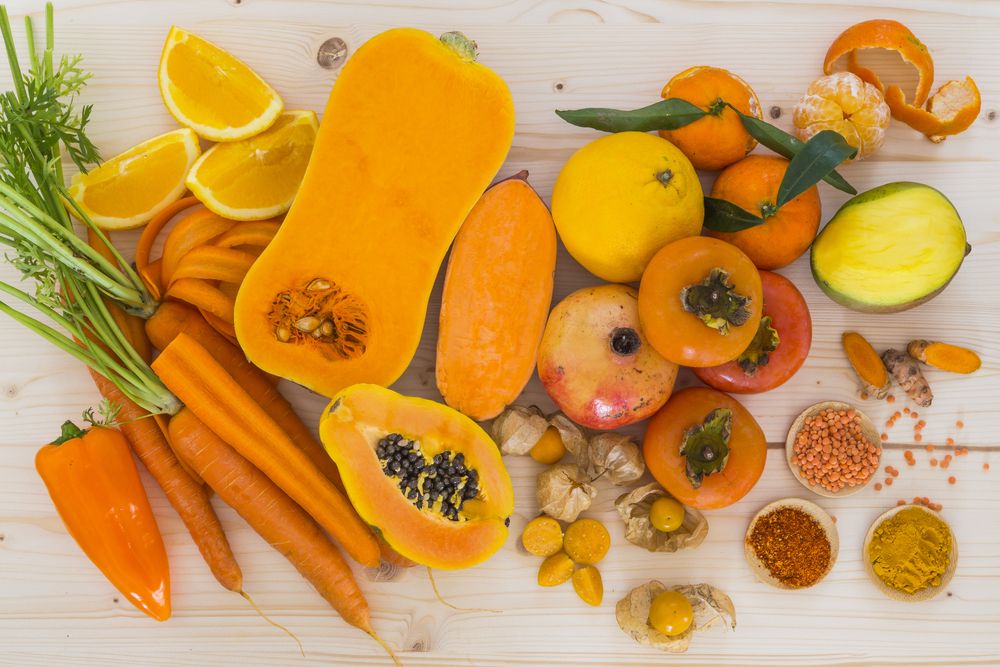
E number of Carotenes, beta-, synthetic: Eno 160a(i)
E number of Carotenes, beta-, vegetable:Eno 160a(ii)
E number of Carotenes, beta-, Blakeslea trispora E160a(iii)
E number of Beta-Carotene-rich extract from Dunaliella salina Algal carotenes (E 160a(iv)
INS160a(i-iv) of betacaotene variant is as below
beta-carotene
Plant carotenes
Beta-carotene from Blakeslea trispora
Carrot oil
CI Food Orange 5
EINECS 230-636-6
Physical Description
Beta-Carotene, an isomer of the naturally occurring carotenoid carotene, is the pigment largely responsible for the color of various products obtained from nature. β -carotene may be obtained from natural sources, such as various edible vegetable sources or by fermentation from Blakeslea trispora or produced synthetically from acetone. Both the synthetically produced and the natural sources of β -carotene can be used as color additives. All types of carotenes display pro-Vitamin A activity. Carotenes are generally available in shades of yellow to yellow-orange but can also be found in orange or red shades. Carotenes offer excellent light, heat and pH stability.
Common Uses
Carotenes are natural orange food colors used in a wide range of food and beverages including cider, malt beverages, water-based flavored drinks, margarines, cheeses, cake fillings, custards, yogurts, processed nuts, precooked pastas and noodles.
August Food Ingredients is one of the leading manufacturer and supplier of Beta Carotene natural food colour.
Specifications
Codex GSFA Provisions
Carotenoids, including beta-apo-8′-Carotenal (INS No. 160e), beta-Carotenes, Blakeslea trispora (INS No. 160a(iii) and beta-Carotenes, synthetic (INS No. 160a(i)), and beta-apo-8′-Carotenoic acid, ethyl ester (INS No. 160f) are added to foods and beverages at concentrations in more than 70 food categories up to a maximum permitted level (MPL) as established by the Codex Alimentarius Commission and published in the General Standard of Food Additives (GSFA).
Additionally, vegetable beta-Carotenes (INS No. 160a(ii)) are added to foods and beverages at concentrations in more than 80 food categories up to a maximum permitted level (MPL) as established by the Codex Alimentarius Commission and published in the General Standard of Food Additives (GSFA). Many applications for the use of Beta-Carotene-rich extract from Dunaliella Salina (INS No. 160(aiv)) as a color additive in foods and beverages have been proposed and are pending authorization, following completion of the review and comments process.
Regulatory Approvals
USA (US FDA ) regulation of beta carotene : β -carotene is exempt from certification and may be safely used for coloring foods generally (21 CFR 73.95), for coloring drugs generally, including those for eye area (21 CFR 73.1095), and for coloring cosmetics generally, including those for eye area (21 CFR 73.2095) in amounts consistent with GMP. Also, carrot oil is exempt from certification and may be safely used for coloring foods generally in amounts consistent with GMP (21 CFR 73.300)
EU regulation of beta carotene : No ADI established (EFSA, 2012). EFSA has authorized carotenes for use in specific food and beverage categories at quantum satis
JECFA regulation of beta carotene : ADI withdrawn for beta-carotene (synthetic) and beta-carotene from Blakeslea trispora (2019). ADI of not specified established for beta-carotene-rich extract from D. salina (84th meeting, 2017). ADI of acceptable established for carotenes (vegetable) provided the level of use does not exceed the level normally found in vegetables (41st Report, 1993).
Reference :IACM website: https://iacmcolor.org/color-library/
Paprika extract
INS No 160c(i-ii)
Enuber of paprika extract is E 160c
Alternative Names for paprika:
Paprika
Paprika oleoresin
Paprika extract, Capsanthin, Capsorubin
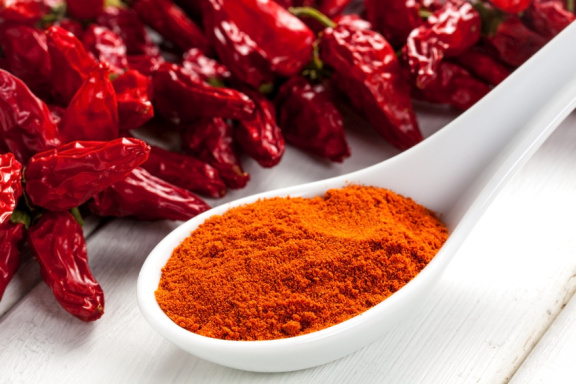
Physical Description
Paprika is a deep red, sweet, pungent powder from the ground, dried pod of mild capsicum (Capsicum annuum L.). Paprika extract is obtained by solvent extraction of the dried ground fruit pods of Capsicum annum. The major coloring principles are capsanthin and capsorubin, and other coloring compounds such as other carotenoids are also present. Extracts are slightly viscous, homogeneous red liquids and are used to obtain a deep red color in any food that has a liquid/fat phase.
Common Uses
Paprika is used to color meat products, confectionery, vegetable oils, snacks, surimi, seasonings, soups, sauces, salad dressings, marinades, processed cheese, bakery products, fruit preparations, convenient foods and canned goods. Its use as both a color and a spice overlap frequency.
August Food Ingredients is one of the leading manufacturer and supplier of paprika extract natural food colour
Codex GSFA Provisions
The Codex Alimentarius Commission has finalized authorization of Paprika extract (INS No. 160c(ii)) for use in 3 food categories, including confectionery including hard and soft candy, nougats, etc., decorations, toppings (non-fruit) and sweet sauces and chewing gum as noted in the General Standard of Food Additives. Many other applications of Paprika extract as a color additive in foods and beverages have been proposed and are pending authorization, following completion of the review and comments process.
Regulatory Approvals
USA (USFDA) approval of paprika extract: Paprika (21 CFR 73.340) and Paprika Oleoresin (21 CFR 73.345) are exempt from certification and may be safely used for the coloring foods generally, in amounts consistent with GMP.
JECFA approval of paprika extract: Paprika extract: 0–1.5 mg/kg bw, expressed as total carotenoids (79th Report, 2014).
EU approval of paprika extract: ADI of 24 mg/kg bw/day or 1.7 mg carotenoids/kg bw/day for paprika extract (EFSA, 2015). Specific food and beverage categories where use is authorized at quantum satis are defined in Annex II to Regulation IEC) No 1333/2008 on food additives.
Reference :IACM website: https://iacmcolor.org/color-library/
Annatto
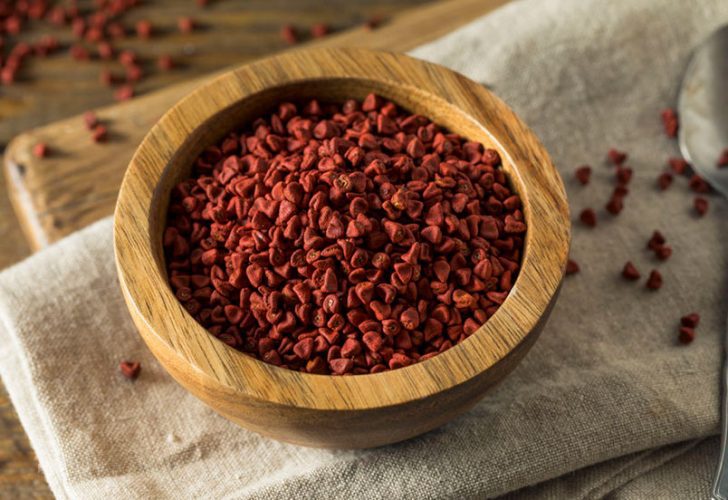
Alternate name for aanatto AnnattoAnnatto extracts, bixin-basedAnnatto extracts, norbixin-based
Annatto bixin Annatto norbixin
INS number of annatto No. 160b(i-ii)
E number for Annatto bixinE160b(i)
E number for Annatto norbixin E160b(ii)
CAS No. 1393-63-1, CI Natural Orange 4 ,CI No. 75120
Physical Description of annatto
Annatto extracts are obtained from the outer layer of the seeds of the tropical tree Bixa orellana. The principal pigment is cis-bixin, which is contained in the resinous coating of the seed itself, producing color ranges from light yellow to orange. Processing primarily entails the removal of the pigment by abrasion of the seeds in an appropriate suspending agent. Traditionally, water or vegetable oil is used for this purpose, although solvent extraction is also employed to produce annatto extracts with a higher content of pigment. Microcrystalline bixin products of 80–97% purity have been developed in response to the need for more concentrated annatto extracts.
Common Uses of Annatto
Annatto extracts have been used for over two centuries as a food colors, especially in cheese, and various types are now used in a wide range of food products, including butter, margarine, salad dressing, ice cream and other frozen desserts, confectionery, egg products, fish and fish products, meat products, cereals, cakes, beverages, soup mixes, fruit products, snacks, bakery products, spices and seasonings, and sausage casings, along with drugs and cosmetics.
August Food Ingredients is one of the leading manufacturer and supplier of annatto natural food colour
Codex GSFA Provisions
The Codex Alimentarius Commission has finalized authorization of Annatto extracts, bixin-based (160b(i)) and Annatto extracts, norbixin-based (160b(ii)) for use in chewing gum, decorations, toppings (non-fruit) and sweet sauces, flavored fluid milk drinks, and confectionery. Annatto extracts, bixin-based is also approved for use in butter and smoked, dried, fermented and/or salted fish and fish products, including mollusks, crustaceans, and echinoderms, while annatto extracts, norbixin-based is allowed in ripened cheese. A large number of other applications of Annatto extracts, both bixin and norbixin-based as a color additive in foods and beverages have been proposed and are pending authorization, following completion of the review and comments process.
Regulatory Approvals
USA(USFDA) regulation regarding Annatto: Annatto extract is a color additive exempt from certification and permanently listed for use in foods generally (21 CFR 73.30), for use in drugs generally, including those for eye area (21 CFR 73.1030), and as annatto for use in cosmetics generally, including those for eye area (21 CFR 73.2030) at levels consistent with GMP.
JECFA regulation regarding Annatto: An ADI for bixin of 0.-12 mg/kg bw and a group ADI for norbixin and its disodium and dipotassium salts of 0-0.6 mg/kg bw expressed as norbixin were established at the 67th JECFA (2006).
EU regulation regarding Annatto: ADI of 6 mg bixin/kg body weight (bw) per day and an ADI of 0.3 mg norbixin/kg bw per day. (EFSA, 2016) EFSA has authorized uses for annatto bixin and annatto norbixin in specific food and beverage categories at maximum use levels
Carmine

Alternative name for carmine Cochineal extract are Carmine,Cochineal,Carminic acid,Cochineal carmine
INS number for carmine is INS 120
E no for carmine is E 120
CI Natural Red 4
CI No. 75470
CAS Nos.
1343-78-8 (Cochineal)
1260-17-9 (Carminic acid)
1390-65-4 (Carmines)
Physical Description
Cochineal is obtained from the dried bodies of the gravid female insect Coccus cacti; it has been used as a food and textile dye since ancient times. Carmine is a dark red color additive obtained via aqueous extraction of cochineal. Carmine consists of an aluminum or calcium-aluminum lake on an aluminum hydroxide substrate of carminic acid, the coloring principle of cochineal. Cochineal and Carmine both contain the red pigment, Carminic acid that presents excellent stability against heat and light. Carminic acid is a hydroxyanthraquinone linked to a glucose unit and it comprises approximately 10% of cochineal and 2-4% of its extract. Commercial preparations of carmine contain 20-50% carminic acid. Cochineal is an aqueous extract providing color shades from orange to red and is generally used in low pH applications. It is insoluble in water, glycerine, and propylene glycol. It is stable in light and to oxidation but not at varying pH or microbiological attack. Carminic acid is susceptible to oxidation. Carminic acid is a stable pigment that is soluble in water. Cochineal is soluble in alcohol. Carmine is a water-dispersible powder which is insoluble in alcohol and oil. It is readily attached to proteins thus it has been successfully used to color milk-based products.
Common Uses of carmine
Carmine and cochineal can be used for coloring meat products, seafood, confectionery, alcoholic beverages and soft drinks, cider, vinegar, yogurt, baked goods, jams, jellies, dairy products, snack food, convenient food, fruit preparation, seasonings, pharmaceuticals, and cosmetics.
August Food Ingredients is one of the leading manufacturer and supplier of carmine natural food colour
Codex GSFA Provisions
Carmines (INS No 120) are added to foods and beverages at concentrations up to a maximum permitted level (MPL) in more than 70 food categories as established by the Codex Alimentarius Commission and published in the General Standard of Food Additives (GSFA).
Regulatory Approvals
USA USFDA regulation for carmine: Carmine and cochineal extract are exempt from certification and may be safely used for coloring foods generally (21 CFR 73.100), ingested and externally applied drugs (21 CFR 73.1100), and carmine may be safely used in cosmetics generally, including cosmetics intended for use in the eye area (21 CFR 73.2087) in amounts consistent with GMP.
EU regulation for carmine: 0-5 mg/kg (EFSA, 2015). EFSA has authorized Cochineal, Carminic acid, Carmines for use at concentrations up to permitted MPLs in specific food and beverage products.
JECFA regulation for carmine: Group ADI of 0-5 mg/kg bw for carmines, as ammonium carmine or the equivalent of Ca, K and Na (55th report, 2000). No ADI allocated for Cochineal Extract or Carmine Lake (21st report, 1977). The Committee concluded that cochineal extract, carmines, and possibly carminic acid in foods and beverages may provoke allergic reactions in some individuals.
Reference :IACM website: https://iacmcolor.org/color-library/
Anthocyanin
E number:E163
INS No 163
-163(ii) Grape skin extract (Enociania, Eno)
-163(iii) Blackcurrant extract
-163(iv) Purple corn color
-163(v) Red cabbage color
-163 (vi) Black carrot extract
-163 (vii) Purple sweet potato color
-163 (viii) Red radish color
-163(ix) Elderberry color
-163(x) Hibiscus color
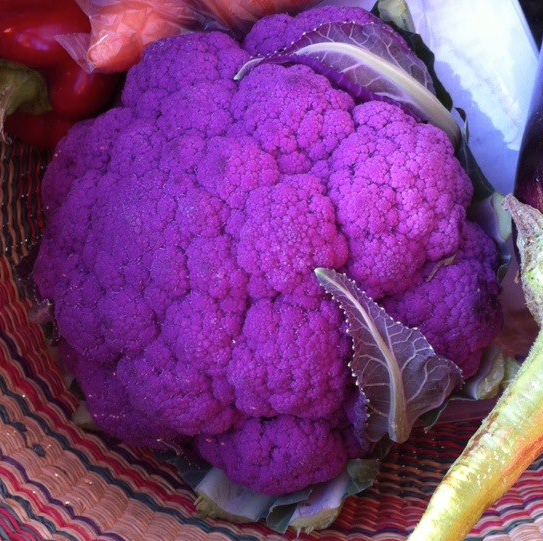
Physical Description
Anthocyanins are widely distributed in the plant kingdom where they occur as glycosides (i.e. associated with a sugar moiety) in combinations that produce red, blue or purple coloration in a variety of fruits and vegetables. Grape color extract and grape skin extract (enocianina) are anthocyanin-containing color additives approved for use in the United States. Grape color extract is an aqueous solution of grape anthocyanin pigments made from concord grapes or a dehydrated water-soluble powder prepared from the aqueous solution. The aqueous solution is prepared by extracting the pigments from precipitated lees produced during the storage of concord grape juice. It contains the common components of grape juice, namely anthocyanins, tartrates, malates, sugars, and minerals but not in the same proportion as found in grape juice. Water-soluble pigments such as 3-mono-and 3,5-di-glucosides of malvidin, delphinidin and cyanidin, and their acylated derivatives, are responsible for the purple color of grape color extract. The color intensity increases as pH falls, with stability being greatest below pH 4.5. Grape skin extract is a purplish-red liquid prepared by the aqueous extraction (steeping) of the fresh deseeded marc remaining after grapes have been pressed to produce grape juice or wine. It contains the common components of grape juice, namely, anthocyanins, tartric acid, tannins, sugars, minerals, etc., but not in the same proportions as found in grape juice. During the steeping process, sulphur dioxide is added and most of the extracted sugars are fermented to alcohol. The extract is concentrated by vacuum evaporation, during which most of the alcohol is removed.
Common Uses of Anthocyanin:Anthocyanins are used to color beverages, confectionary, desserts, ice cream, fruit preparations, bakers jam and non-standard jellies and preserves, sherbets, ices, pops, raspberry, yogurt, gelatin desserts, candy, and bakery
August Food Ingredients is one of the leading manufacturer and supplier of Anthocyanin natural food colour
Reference :IACM website: https://iacmcolor.org/color-library/
Beetroot Extract(Juice concentrate)
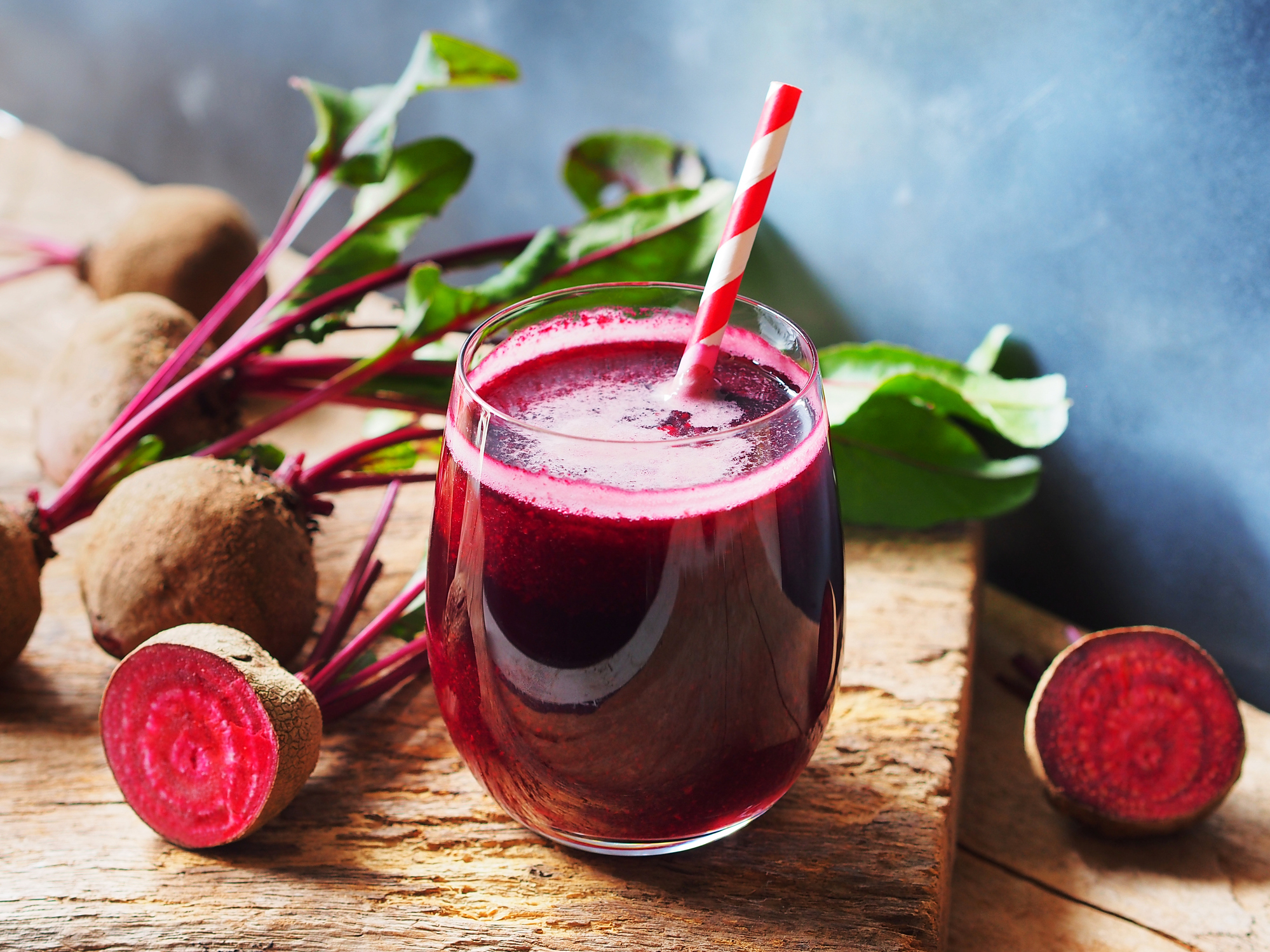
Alternate name for Dehydrated beets,Beet powder,Beetroot Red,Betanin
INS No. 162
E number for beetroot is E162
EINECS No. 231-628-5
CAS No. 7659-95-2
Physical Description
Beet Red is the color obtained from the roots of red beets (Beta vulgaris L var rubra), as press juice or by aqueous extraction of shredded beet roots. composed of different pigments all belonging to the class betalaine; main colouring principle consists of betacyanins (red) of which betanine accounts for 75-95%; minor amounts of betaxanthine (yellow) and degradation products of betalaines (light brown) may be present. Besides the color pigments the juice or extract consists of sugars, salts and/or proteins naturally occurring in red beets. The solution may be concentrated and some products may be refined in order to remove most of the sugars, salts and proteins. Beetroot red is available as a liquid, paste, or solid, depending upon the degree of processing and gives a bright red to bluish red color.
Common Uses
Beet red is used to color hard candies, yogurt, ice creams and frozen desserts, salad dressings, ready-made frostings, cake mixes, meat and meat substitutes, powdered drink mixes, gravy mixes, biscuit filling, marshmallow candies, fruit preparations, convenience foods, soft drinks, and gelatin desserts.
August Food Ingredients is one of the leading manufacturer and supplier of Anthocyanin natural food colour
Codex GSFA Provisions
Beet red (INS No. 162) is a food additive that is included in Table 3 of the General Standard for Food Additives (GSFA), and as such may be used in specified foods under the conditions of good manufacturing practices (GMP) as outlined in the Preamble of the Codex GSFA. Beet red is also acceptable in foods conforming to the Codex Standards for Bouillons and Consommés (CS 117-1981), Instant Noodles (CS 249-2006) and Certain Canned Foods (CS 319-2005).
Regulatory Approvals
USA USFDA regulation for beetroot colour: Beet powder (Dehydrated beets) is a color additive exempt from certification and permanently listed for food use in amounts consistent with GMP (21 CFR 73.40). Vegetable juice may be safely used for the coloring of foods generally, in amounts consistent with GMP (21 CFR 73.260)
JECFA regulation for beetroot colour: An ADI ‘not specified’ was established at the 31st JECFA (1987).
EC regulation for beetroot colour: EFSA has concluded that beetroot red is not of safety concern as regards its current use as a food additive (EFSA, 2015). EFSA has also authorized use in specific foods and beverages at quantum satis
Reference :IACM website: https://iacmcolor.org/color-library/
Chlorophylls, Copper complexes
INS number for copper chlorophyll is INS No. 141(i)
E number for copper chlorophyll is E 141(i)
Chlorophyllin copper complexes, potassium and sodium salts:
INS number of Chlorophyllin copper complexes, potassium and sodium salts INS No. 141(ii)
E number of Chlorophyllin copper complexes, potassium and sodium salts E141(ii)
Alternate name are CI Natural Green 5,CI No 75815,Sodium Copper Chlorophyllin,Potassium Copper Chlorophyllin, Copper complexes of chlorophyllins
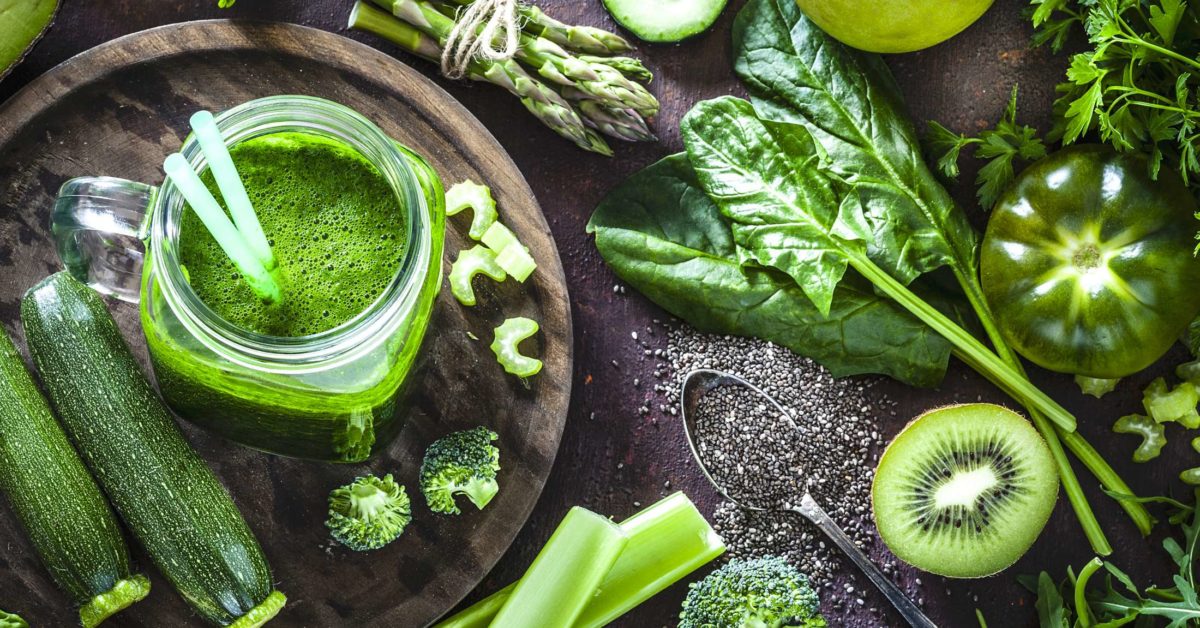
Physical Description
Chlorophyll is an oil soluble pigment obtained from lucerne, nettle, spinach and grass, providing an olive-green color. The addition of copper results in copper chlorophyll. The water-soluble form, sodium copper chlorophyllin, is obtained by the saponification of oil soluble forms. The copper chlorophyllin pigment gives bright green and is very stable against light and heat.
Common Uses
Typical applications include confectionery, desserts, beverages, dairy products, ice cream, fruit preparation, bakery products, soups, sauces, snack food, seasonings, and convenience food.
August Food Ingredients is one of the leading manufacturer and supplier of Chlorophophylls and Chlorophyllins, copper complexes natural food colour
Codex GSFA Provisions
Chlorophophylls and Chlorophyllins, copper complexes (INS Nos. 141(i-ii)) are added to foods and beverages in more than 50 food categories at concentrations up to a maximum permitted level (MPL) as established by the Codex Alimentarius Commission and published in the General Standard of Food Additives (GSFA).
Regulatory Approvals
JECFA regulation for chlorophylls, copper complexes: ADI of 0-15 mg/kg bw for chlorophylls, copper complexes (13th Report, 1969) and chlorophyllins, copper complexes sodium and potassium salts (22nd Report, 1978)
USA(US FDA) regulation for chlorophylls, copper complexes:: Sodium copper chlorophyllin is exempt from certification and may be safely used to color citrus-based dry beverage mixes in an amount not exceeding 0.2% by in the dry mix (21 CFR 73.125) Potassium sodium copper chlorophyllin may be safely used for coloring dentrifices that are drugs at a level not to exceed 0.1% (21 CFR 73.1125) and that are cosmetics not in excess of 0.1% and only in combination with specifcally listed substances (21 CFR 73.2125)
EU regulation for chlorophylls, copper complexes:: ADI withdrawn (2015); Copper complexes of chlorophylls and chlorophyllins are authorized for use at Quantum satis in specific foods and beverages in Europe.
Reference :IACM website: https://iacmcolor.org/color-library/
Spirulina color

INS No. 134
CAS No. 20298-86-6
Physical Description of spirulina
Spirulina extract is obtained by aqueous extraction of the biomass of Arthrospira platensis, an edible cyanobacterium. Commercial products are formulated in liquid and powder forms.
Common Uses
Spirulina extract is a blue coloring agent used in a wide range of foods and beverages including flavored dairy products, cheese, dairy based desserts, processed fruits and vegetables, baked good and baking mixes, alcoholic and non-alcoholic beverages and beverage bases, breakfast cereals, cocoa products, confectionery products (including soft and hard candy and chewing gum), egg products, gravies and sauces, herbs and spices, condiments and soup and soup mixes, as well as in nutritional supplements and pharmaceuticals.
August Food Ingredients is one of the leading manufacturer and supplier of spirulina
USA (USFDA) regulation regarding spirulina: Spirulina extract is exempt from certification and may be safely used to color confections (including candy and chewing gum), frostings, ice cream and frozen desserts, dessert coatings and toppings, beverage mixes and powders, yogurts, custards, puddings, cottage cheese, gelatin, breadcrumbs, ready-to-eat cereals (excluding extruded cereals), coating formulations applied to dietary supplement tablets and capsules at levels consistent with GMP, and to seasonally color the shells of hard-boiled eggs,(21 CFR 73.530) coating formulations applied to drug tablets and capsules at levels consistent with GMP (21 CFR 73.1530)
JECFA regulation regarding spirulina: A temporary ADI “not specified” was established at the 86th JECFA (2018).
EC regulation regarding spirulina: Spirulina extract is generally considered a coloring food in the EU, rather than an additive food color. A coloring food is a food ingredient used for coloring purposes.
Safety Assessment
Spirulina extract is used in food in China, the EU, Japan, Mexico and the USA, among others. JECFA evaluated spirulina extract in 2018 and established an ADI of “not specified” based on the absence of toxicity in repeated-dose animal studies conducted with spirulina extract and dried spirulina. No evidence of carcinogenicity or systemic toxicity was observed in long-term toxicity studies in rats fed spirulina extract or dried spirulina. There were no concerns regarding genotoxicity. Reproductive and developmental toxicity were not of concern based on the absence of toxicity in feeding studies conducted with dried spirulina in mice, rats and hamsters. Expressed as phycocyanins, estimated dietary exposure from the use of spirulina extract as a food colour, based on the budget method, and exposure to spirulina extract and dried spirulina from other dietary sources including food ingredients, dietary supplements and coatings of dietary supplements was 190 mg/kg bw for a 60 kg adult and 650 mg/kg bw for a 15 kg child. The Committee concluded that this dietary exposure does not present a health concern.
Reference :IACM website: https://iacmcolor.org/color-library/
Caramel
E number of Plain Caramel Class, Caustic Caramel I is E 150a also INS No. 150a
E number of Caustic Sulfite Caramel, Sulfite Caramel, Class II is E150b and INS No. 150b
E number of Ammonia Caramel , Class IIIi s E 150c and INS No. 150c
E number of Sulfite Ammonia Caramel Class IV is E 150d and INS No is 150d
CAS No. 8028-89-5
Physical Description
Caramel is made by the controlled heating of food-grade carbohydrates and is one of the most common natural colorings. There are four different types of caramel distinguished by how they are produced: plain caramel, sulphite caramel, and ammonia caramel or sulphite ammonia caramel.
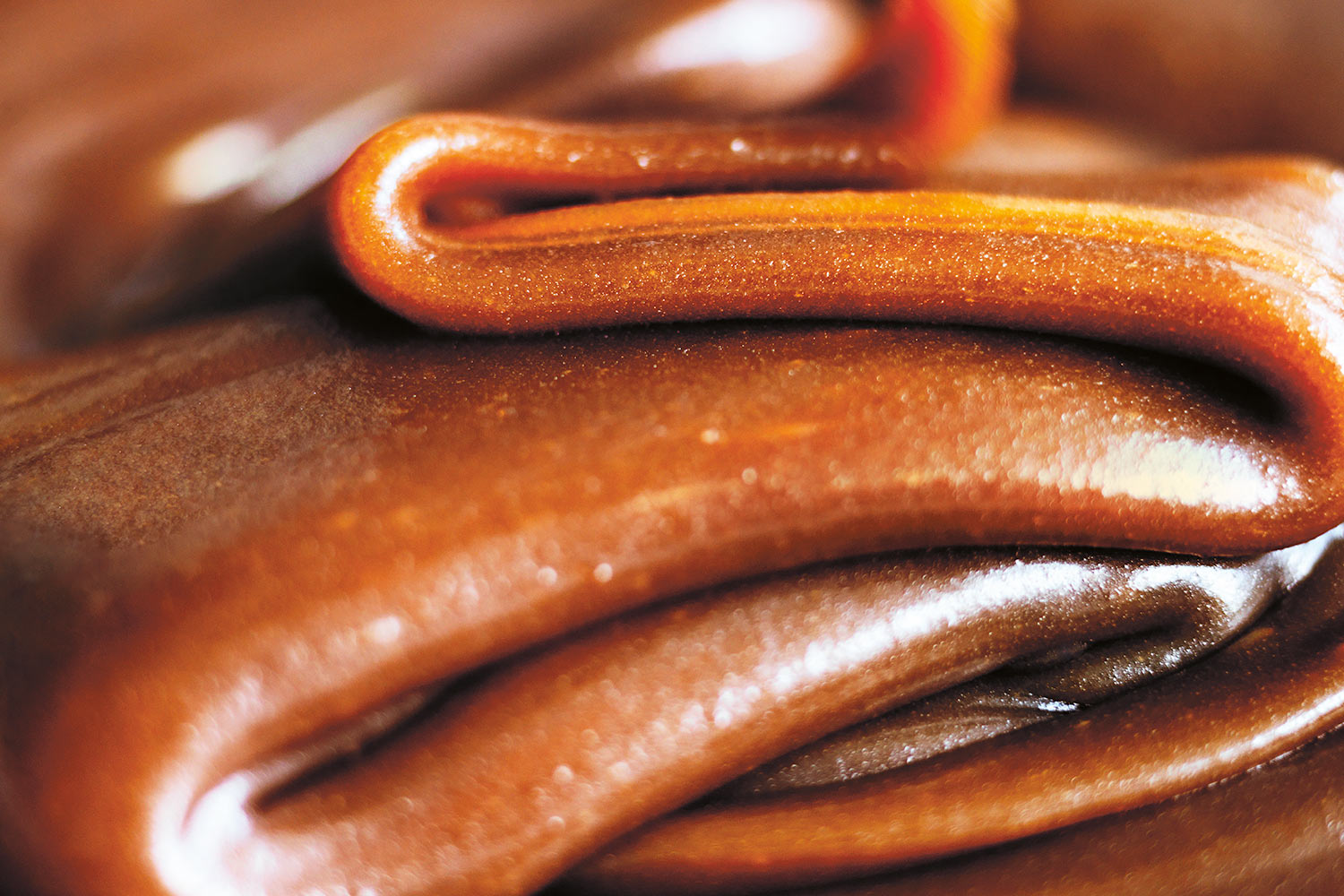
Common Uses
Caramel color is mostly used in soft drinks and alcoholic beverages. It is also added to confectionery, bakery products, dairy products, desserts, meat, seafood, vinegars, sauces, gravies, soups, snack food, fruit preparations, and convenient food.
Codex GSFA Provisions
Caramel I – plain caramel (INS No. 150a) is a food additive that is included in Table 3, and as such may be used in specific foods under the conditions of good manufacturing practices (GMP) as outlined in the Preamble of the Codex GSFA, as well as in foods conforming to Commodity Standards for Bouillons and Consommés (CS 117-1981), Instant Noodles (CS 249-2006) and Certain Canned Fruits (CS 319-2015).
Caramel II – sulfite caramel (INS No. 150b) is currently permitted for use in 5 food categories, including chewing gum, confectionery, decorations, toppings (non-fruit) and sweet sauces, flavored fluid milk drinks, pre-cooked pastas and noodles and like products, and there are many more draft provisions pending adoption.
Caramel III – ammonia caramel (INS No. 150c) and Caramel IV – sulfite ammonia caramel (INS No. 150d) are also authorized for use in more than 70 food categories in the GSFA.
August Food Ingredients is one of the leading manufacturer and supplier of caramel colour.
Regulatory Approvals
USA USFDA regulation : Caramel is exempt from certification and may be safely used for coloring foods generally (21 CFR 73.85), for use in drugs generally (21 CFR 73.1085), and for use in cosmetics generally, including those for eye area (21 CFR 73.2085) in amounts consistent with GMP
EU regulation for caramel: Group ADI of 300 mg/kg bw/day as well as an individual ADI of 100 mg/kg bw/day for Class III Caramel (EFSA, 2011). EFSA has authorized use and established maximum use levels in specific food and beverage categories.
JECFA regulation for caramel: JECFA: An ADI for Class I of ‘not specified’ was established at the 29th JECFA (1985), for Class II of 0 -160 mg/kg bw was established at the 55th JECFA (2000) and an ADI for Class III of 0-200 mg/kg bw (0-150 mg/kg bw on solids basis) was established at the 29th JECFA (1985) and an ADI for Class IV of 0-200 mg/kg bw (0-150 mg/kg bw on solids basis) was established at the 29th JECFA (1985).
Reference :IACM website: https://iacmcolor.org/color-library/
Carbonated Vegitable
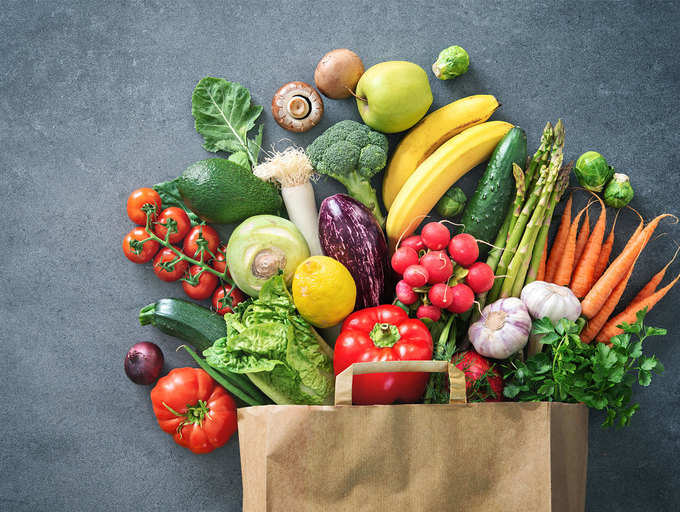
E number of carbonated vegetable E 153 and INS number INS No. 153
EINECS No. 231-153-3
CAS 7440-44-0
Alternated names for carbonated vegetable are vegetable black, activated vegetable carbon, carbon black (vegetable sources)
Physical Description of vegetable carbon
Vegetable carbon is a black, odorless powder with color shades range from grey to black, depending on the dosage rate used.Vegetable carbon is rarely used alone in food because it provides an intense black color that is suitable only for particular varieties of confectionery, ices or desserts. However, it can be used as a shading agent with other colors, providing increased color intensity.
Common Uses of vegetable carbon
Typical applications include confectionery, bakery products, decorations, cheese coating, black caviar substitute, cosmetics, and pharmaceuticals.
August Food Ingredients is one of the leading manufacturer and supplier of vegetable carbon colour.
EU: EU: No ADI allocated (EFSA, 2012). Specific food categories where vegetable carbon is authorized for use at quantum satis have been defined in Directive 94/36/EC on colors for use in foodstuffs.
Reference :IACM website: https://iacmcolor.org/color-library/
Titanium Dioxide
Alternate name for titanium dioxide are Titania, CI Pigment White 6
E number for titanium dioxide is E171 INS number of titanium dioxide is INS No. 171
CI No. 77891,CAS No. 13463-67-7, EINECS No. 236-675-5
Physical Description
Titanium Dioxide (TiO2) is a bright white pigment that has a melting point ranging from 1830-1850°C. It is soluble in alkali solutions and sulfuric acid, but insoluble in nitric acid and water. The three crystalline forms of titanium dioxide that exist in nature are anastase, brookite, and rutile, with anastase being the most commonly available. Only synthetically produced TiO2 is used as a color additive and has excellent light, heat and pH stability. Industrial TiO2 is primarily the product of chemical synthesis using ilmenite (FeTiO3) as the source of titanium.
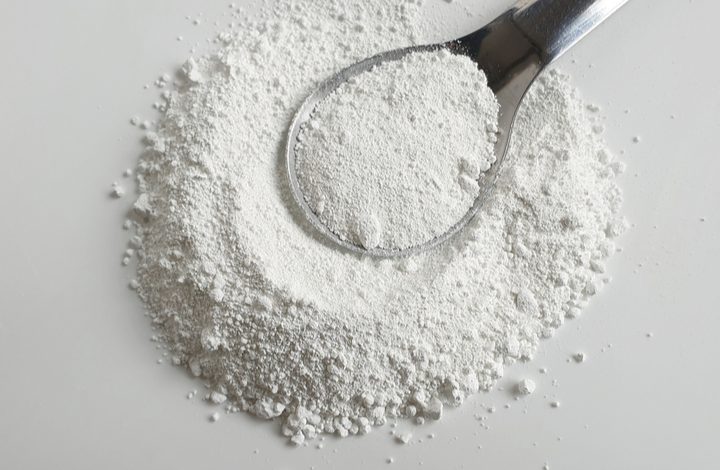
Common Uses
Titanium dioxide is used to color confectionery goods, bakery products, dairy products, cheeses, icings and decorations, frozen desserts, non-dairy creamers, dried soup, pet foods, pharmaceutical products and cosmetics.
Titanium dioxide (INS No 171) is a food additive that is included in Table 3 of the General Standard of Food Additives (GSFA), and as such may be used in specified foods under the conditions of good manufacturing practices (GMP) as outlined in the Preamble of the Codex GSFA. Titanium dioxide is acceptable in foods conforming to Commodity Standards for Bouillons and Consommés (CS 117-1981), Certain Canned Fruits (CS 319-2015), and Provolone (CS 272-1968).
August Food Ingredients is one of the leading manufacturer and supplier of Titanium dioxide.
Regulatory Approvals
USA USFDA regulation of titanium dioxide: Titanium dioxide is exempt from certification and may be safely used for coloring foods generally, as long as the quantity of titanium dioxide does not exceed 1% by weight of the food (21 CFR 73.575), for coloring ingested and externally applied drugs generally, in amounts consistent with GMP (21 CFR 73.1575), and in cosmetics, including cosmetics intended for use in the area of the eye in amounts consistent with GMP (21 CFR 73.2575).
JECFA: JECFA regulation of titanium dioxide An ADI “not limited” was established at the 13th JECFA (13th Report, 1969).
EC: European council regulation of titanium dioxide No ADI established but acceptable for use in food (EFSA, 2016). EFSA has authorized specific food and beverage categories where titanium dioxide can be used at quantum satis
Reference :IACM website: https://iacmcolor.org/color-library/